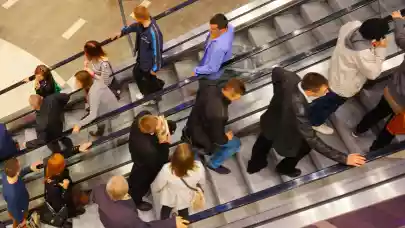
Shopping centres in Poland were reopened on 4 May. This is an indication that there’s light at the end of the tunnel for landlords and tenants, but the ongoing pandemic will have an enormous impact on the entire retail industry. Sylwia Wiszowata-Łazarz and Joanna Kłusek from Cushman & Wakefield talked about the current market situation, changing consumer habits and what actions to take to ensure a safe return of shoppers to brick-and-mortar stores.
Return on new conditions
Many sectors including retail were hit hard in Poland by the declaration of the state of an epidemic and ensuing restrictions. Shopping centres were reopened on 4 May, but on new conditions. Travel agencies, cinemas, gyms, beauty and hair salons, and eat-in restaurants remain closed. Both entire shopping centres and individual stores are allowed to have 1 customer per 15 sqm. Many duties have been imposed on retailers and shopping centre managers, including the requirement to provide disposable gloves and hand sanitizers for customers.
“It is critical that these restrictions are adhered to because buildings failing to meet them could be closed. What’s more, the Ministry of Health has warned that all shopping centres could be shuttered again if the growth in new infections hits 4% or if more than half of hospital beds and ventilators across the country are occupied. Giving customers a sense of safety should be a priority for both landlords and tenants,” says Joanna Kłusek, Partner, Retail Asset Services, Cushman & Wakefield.
Near-term outlook
One of the key trends on the retail market has been high growth in online orders in the first quarter of this year compared to the same period in 2019, especially in e-grocery as food retailers recorded a 239% increase on the first quarter of 2019. Whether online shopping will become a regular habit of customers is a question the industry is now asking. To meet market requirements, some retailers such as Żabka, Kaufland, Ziaja and Stokrotka have decided to go online in spite having no intention to do so previously.
The current situation has inevitably resulted in a significant fall in shopping centre footfall and changes to shopping patterns. In addition, according to some forecasts, the growth in showrooming and omnichannel retailing is anticipated to accelerate. Bankruptcies and restructuring changes are also likely, which could push vacancy rates up.
“Customer behaviour is changing. The pre-pandemic world was notable for its over-optimism caused by the improving quality of life and financial stability of many consumers. We used to spend a lot of time in shopping centres, not only to shop but also to socialize. Today, consumers put safety first and buy mainly essentials. Adjustment of long-term strategies to the changing needs and expectations of customers and – first and foremost – giving them a sense of safety and synergy of both retail channels are key to the success of property owners and shopping centre tenants. Now is the time for shopping centres to build a digital presence,” adds Sylwia Wiszowata-Łazarz, Associate Director, Poland Asset Services EMEA, Cushman & Wakefield.
According to Inquiry, as many as 64% of survey respondents fear dense spaces and crowds, and 42% - low safety and hygiene standards. 40% have said they are not going to visit shopping centres any time soon. It is therefore imperative that an effective plan of action is prepared for when consumers’ concerns subside.
How to build a sense of safety?
Experts of Cushman & Wakefield propose clear, transparent and positive communications. In Złote Tarasy, the best-known shopping centre in Warsaw, stickers and banners across the complex will remind customers how to shop safely. Communication also happens through other channels such as social media, direct mailing, and outdoor. It is advisable to remind visitors of new rules both on-site and through other non-standard forms of communication. The more successful safety communication there is, the safer the customer will feel.
Activities to bolster sales
In these challenging times, every customer is worth his or her weight in gold when the number of shoppers at a given time is strictly limited. Therefore, now is the right time to take non-standard, creative and bold action. There will be much demand for such solutions as interactive fitting rooms, tools combining online and offline, or eye-catching store displays in common areas. It is also worth considering launching a loyalty program app. Other proven mechanisms include product newsletters, competitions and lotteries. Everything must be done safely. Ambient campaigns in city streets are another interesting solution – when traffic is light as it is now, they will be more noticeable. Now is also the time for digital that is catching on as never before. So, it makes sense to intensify activities in social media to direct footfall to retail stores and think about CSR campaigns to support local communities.
The retail industry now has to stand up to an enormous challenge, but - with a well-thought-out strategy, activities bolstering sales and landlords talking to shopping centre tenants - it will get through the crisis unscathed. Cushman & Wakefield has developed a conceptual support program 6 Feet Retail to assist in preparations of shopping centres for operation, implementation of government guidelines in shopping centres, renegotiation of lease conditions in line with the Anti-Crisis Shield legislation, recommercialisation and repositioning of shopping centres, and development and execution of marketing and PR strategies in response to the rapidly changing market conditions and shopping patterns.



